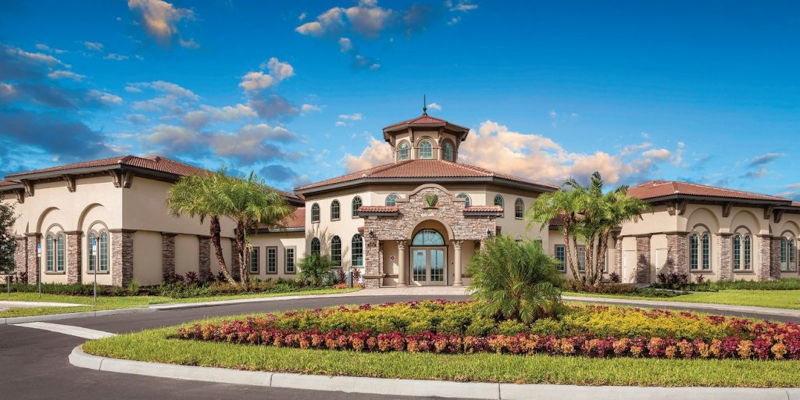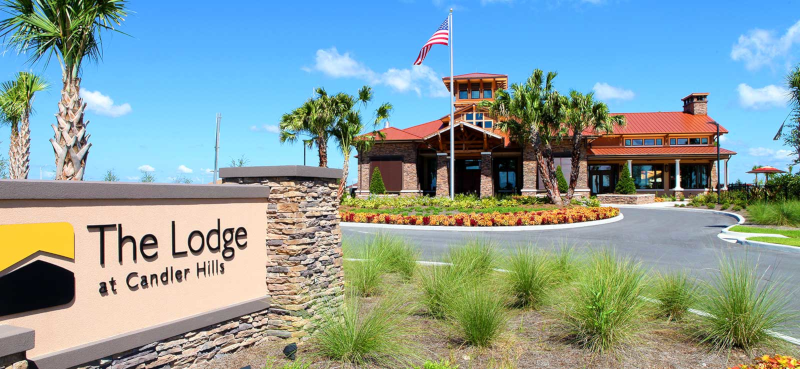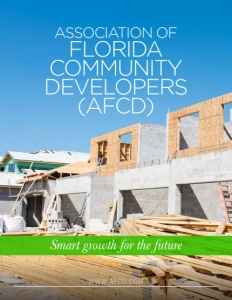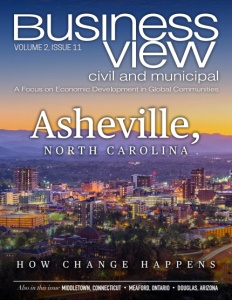Association of Florida Community Developers (AFCD)
Smart growth for the future
Business View Magazine interviews Lance Pierce, Executive Director of the Association of Florida Community Developers (AFCD)
Based in Tallahassee, the Association of Florida Community Developers (AFCD) is made up of the major community developers in Florida. Chartered in 1984 as a not-for-profit corporation by 7 of state’s top land developers, membership has grown to include planners, engineers, environmental specialists, financial experts, attorneys, other associate members.
The association’s mission statement is broad and bold: to provide a leadership role in the creation of quality community development and the formulation of a responsible approach to the planning and development of Florida’s future. In that regard, AFCD is committed to working with Florida’s government leaders to meet the challenges of growth and seize opportunities for economic development to put Florida foremost in the United States.
Business View recently spoke with Lance Pierce, Executive Director of AFCD, for updates on this vital association and his insights into the state of the industry at present and the future outlook.

Association Florida Community Developers Viera Addison Village Club
BVM: How and why was AFCD established and what is the current mandate?
Pierce: “The Association of Florida Community Developers was founded in 1984 by a group of attorneys that represented large landowners and did a lot of land use and growth management policy within their portfolio of clients. At that time, there was a growing void and a need for advocacy and representation for developers in Florida. With the large population boom, there was a need for companies to be coming together, networking, finding a common ground on a number of important issues that affected them.
“Back then, Florida as a state, the legislature and our statutes didn’t really provide for a policy framework around growth. So as more people were moving to Florida and more developer companies were trying to meet the demands of those new residents, there was a group of people in Tallahassee that came together to form AFCD. It started with about seven of the largest development companies in the state, and we’ve grown exponentially over those 37 years.
“Our association as a whole is vibrant, it continues to grow as the number of developers grows to meet the needs of our increasing population in Florida, which is one of the fastest growing states in the U.S. We’ve come a long way – AFCD has been a leader over more than three decades on growth management policy, land use, and environmental sustainability by working with our state regulatory agencies, but also working with our partners in the Florida legislature to plan, and develop, and create policies around smart growth. And how we can support the natural resources we have, while also supporting the continued growth of our state, population-wise.”
BVM: How would you describe the AFCD membership?
Pierce: “Our members are predominately community development companies, as well as some home builders that do some community development themselves or take part in the development process. We currently have about 70 members. Our association includes the developer level, which consists of community development companies, and we also have an associate member level that includes a variety of companies that do business within the community development industry – law firms, civil engineers, architects, biotechnology companies, wastewater treatment facility companies, and many more.”
“Our association and our members are definitely about building communities that are focused on transportation and infrastructure, land use, and all the important aspects of quality of life… it’s a streamlined process where they’re getting environmental permits and wetland permits and relocating endangered species, while at the same time building homes and communities that are effective, resilient, energy efficient, and modernized, so we can make the best of all worlds. All these things we need to be cognizant about in 2021 as we continue to build out.”
BVM: How does advocacy come into play?
Pierce: Advocacy is our largest member benefit; governmental affairs and legislative advocacy before state legislature. Also advocacy and communication with our regulatory agencies. We deal with quite a few, including Business & Professional Regulation, U.S. Army Corps of Engineers, etc., depending on what the issue is. We deal with the Dept. of Transportation a lot for infrastructure and road issues. Our advocacy is mainly focused on a state level but there are times when we have to deal with federal agencies, such as U.S. Fish & Wildlife and the EPA when it comes to natural resources.
“Climate change definitely impacts our developers. So, when we’re looking at building our coastal communities out, we have several policies – whether insurance related or building code related – to make them resilient to hurricane winds but also dealing with sea level rise. The best way we handle those as developers is looking at how we can build communities in an environmentally responsible way to preserve our natural resources to the best of our ability, and in turn to do our part to help combat climate change and the things that go along with that.”
BVM: How have you been communicating with members during COVID?
Pierce: “We’re fortunate that we’re a smaller organization, so it’s been a bit easier. Our mission and our priorities are so narrowly focused to the specific industry of community development and we represent very narrow interests, so communication is very personal for us. Our developer company members are the only ones eligible to sit on our executive committees, so they are the face of our organization and the set the policy and the direction we’re going as an association. But everyone has a vote.
“We do all the normal association outreach – we have quarterly Board of Directors meetings that move around the state – and our Board consists of every single member of the association. That means they’re basically full membership meetings. More recently, in 2020, we were able to conduct those meetings via Zoom or conference calls. So we had moved to a more virtual model, however, since December of 2020, we’ve moved back primarily to in-person quarterly meetings. In August, we had our largest in-person in two years, in Tampa, and we’re excited to be back together – of course, being social distanced and adhering to health protocols, so people feel comfortable coming to a meeting with a group of 50 or more attendees from around the state.”
“Everything we do is two-way communication; we’re a very grassroots organization. All of our members have a voice. We have annual task forces that we form that deal with our legislative agenda – both developer members and associate members sit on those task forces, and every year out of those task forces we create AFCD’s legislative agenda, which is communicated directly to our lobby team, and then they go to the capital to advocate for us.”

On Top of the World Communities the Lodge at Candler Hills
BVM: How has COVID impacted the housing demand and supply of materials?
Pierce: In Florida, the presence of community developers continues to grow, however, a lot of our companies are nationally or internationally based. So we have companies with their headquarters here or other states that do projects all over the world. We have 1,000 people moving to this state every single day, over 350,000 new residents every year in Florida. We thought that would slow down when COVID hit, but our developers and our homebuilders have not seen that demand slow at all. People continue to move here, to want to live in Florida, and our current supply is not able to meet the demand. So as long as that trend continues, I think we’ll continue to see developers have opportunities in our state to plan and build out new communities for new residents to live here.
“We did experience delays in shipments building materials, as well as cost increases, however, a lot of the fallout in community development can be mitigated to an extent because you sign contracts so far in advance and are given price estimates that are current at the time. Of course, supply chain shortages and price spikes can affect that, because you’re still building homes on a daily basis. So it affects our contractors and our home builders but we have seen a levelling off and a decline in the price, specifically of lumber.”
BVM: Looking to the future, how will AFCD continue to be a viable voice for your members?
Pierce: “I see the industry itself being in a great position, with lots of opportunities in Florida as we expect consistent population growth to continue. We have a pro-business state legislature that is focused on making sure that we grow responsibly in Florida. So our developers are poised to capitalize on those opportunities. Moving forward, I think the industry can stay very viable and strong over the next couple of years. As long as we have the demand coming into Florida, our members will be able to continue to grow and have success meeting that demand.
“As our developers continue to operate in a very strong real estate market, and as long as we are effective at the state capital, I see AFCD growing and becoming more and more vocal and resilient over the coming years.”
AT A GLANCE
Association of Florida Community Developers
What: A member-based organization committed to quality community development in Florida
Where: Based in Tallahassee, Florida
Website: www.afcd.com


